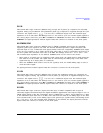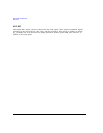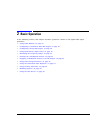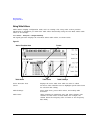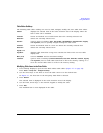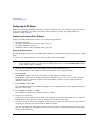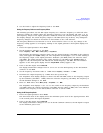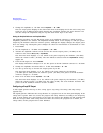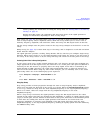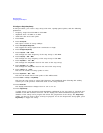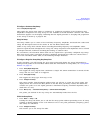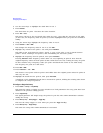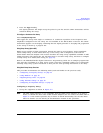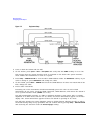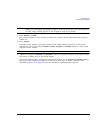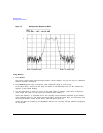
Chapter 2 39
Basic Operation
Configuring the RF Output
NOTE List sweep data cannot be saved within an instrument state, but can be saved to the
memory catalog. For instructions on saving list sweep data, see “Storing Files to the Memory
Catalog” on page 56.
During swept RF output, the FREQUENCY and AMPLITUDE areas of the signal generator’s
display are deactivated, depending on what is being swept.
Step sweep (see page 39) and ramp sweep (see page 41) provide a linear progression through the
start-to-stop frequency and/or amplitude values, while list sweep enables you to create a list of
arbitrary frequency, amplitude, and dwell time values and sweep the RF output based on that list.
The list sweep example uses the points created in the step sweep example as the basis for a new list
sweep.
Ramp sweep (see page 43) is faster than step or list sweep, and is designed to work with an 8757D
Scalar Network Analyzer.
The signal generator provides a softkey, Sweep Retrace Off On, that lets you configure single sweep
behavior. When sweep retrace is on, the signal generator will retrace the sweep to the first point of
the sweep. If the sweep retrace is off, the sweep will stop and remain on the last point in the sweep.
Activating Scalar Pulse in Sweep Configurations
If your sweep setup uses a scalar network analyzer and a DC detector, the PSG must modulate the
swept signal with a 27 kHz square wave, also referred to as a scalar pulse. This pulse modulation is
necessary for the DC detector to properly detect the swept signal. If the PSG is controlled by an
8757D through a GPIB connection, the scalar pulse automatically turns on when DC detection is
selected on the 8757D. When using any other scalar analyzer, you can manually turn on the scalar
pulse using either one of the following key-press sequences:
Press
Sweep/List > Sweep Type > Scalar Pulse Off On to On
or
Press
Pulse > Pulse Source > Scalar > Pulse Off On to On
Using Step Sweep
Step sweep provides a linear progression through the start-to-stop frequency and/or amplitude
values. You can toggle the direction of the sweep, up or down. When the
Sweep Direction Down Up softkey
is set to Up, values are swept from the start amplitude/frequency to the stop amplitude/frequency.
When set to Down, values are swept from the stop amplitude/frequency to the start
amplitude/frequency.
When a step sweep is activated, the signal generator sweeps the RF output based on the values
entered for RF output start and stop frequencies and amplitudes, a number of equally spaced points
(steps) to dwell upon, and the amount of dwell time at each point; dwell time is the minimum period
of time after the settling time that the signal generator will remain at its current state. The
frequency, amplitude, or frequency and amplitude of the RF output will sweep from the start
amplitude/frequency to the stop amplitude/frequency, dwelling at equally spaced intervals defined by
the
# Points softkey value.



